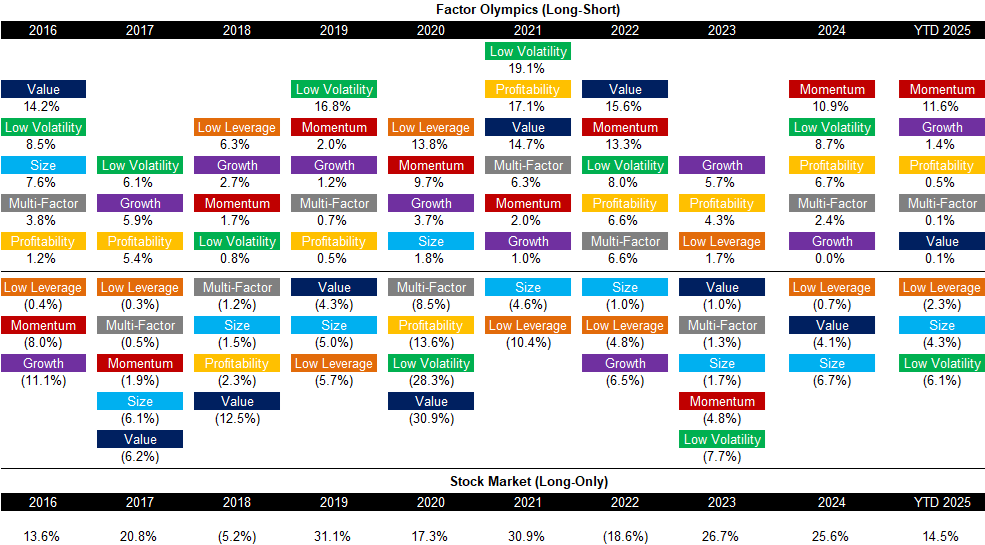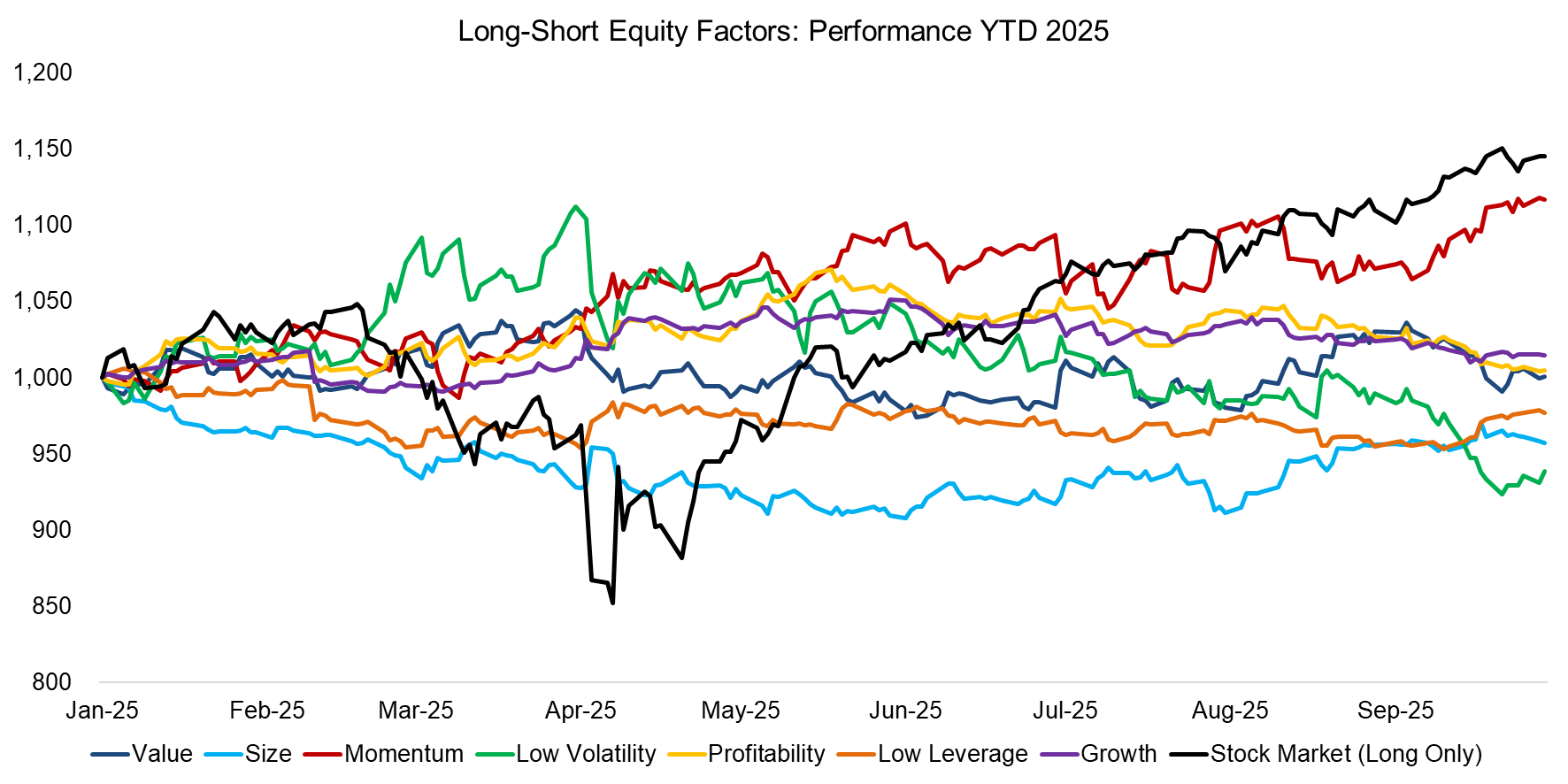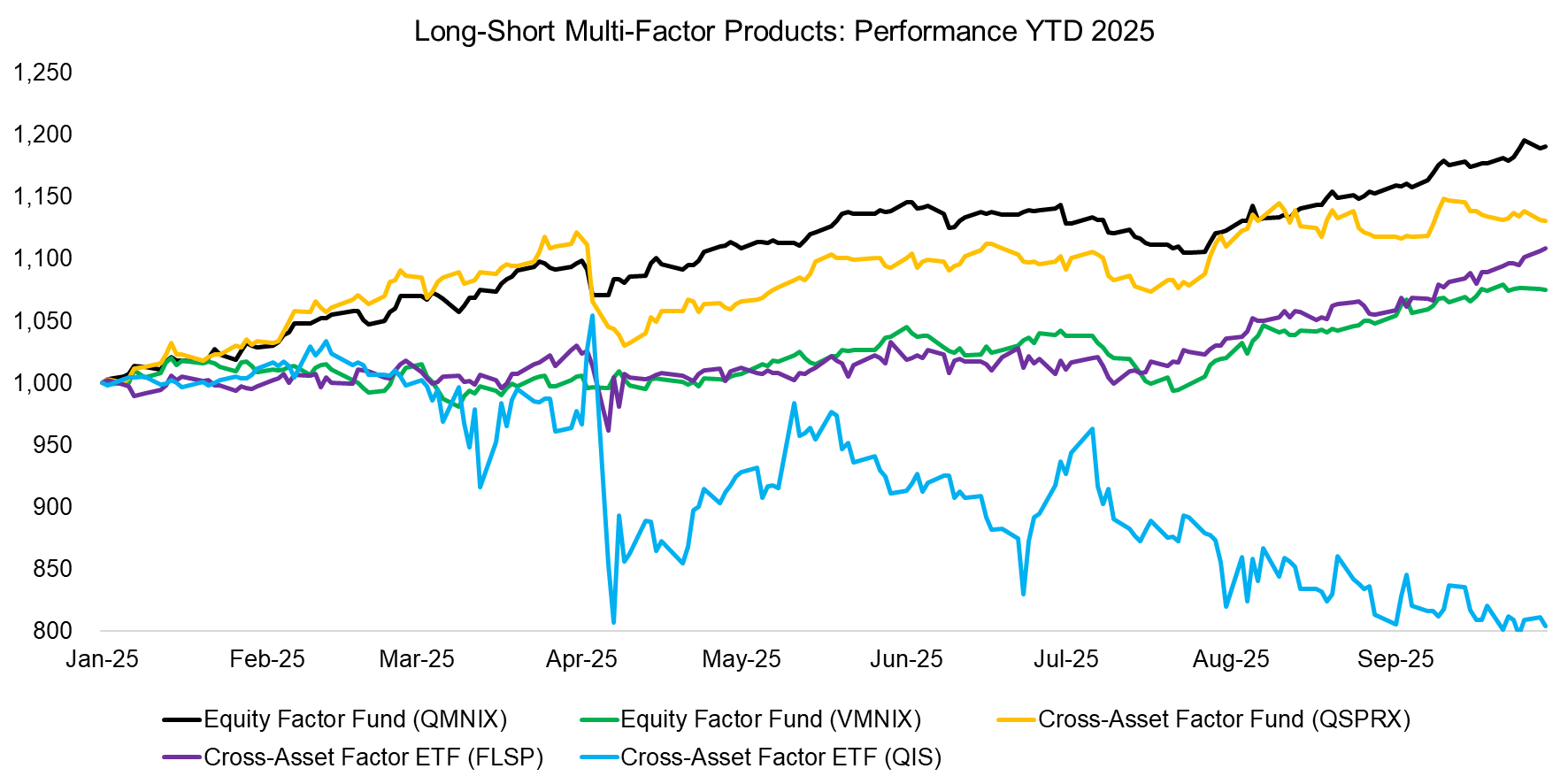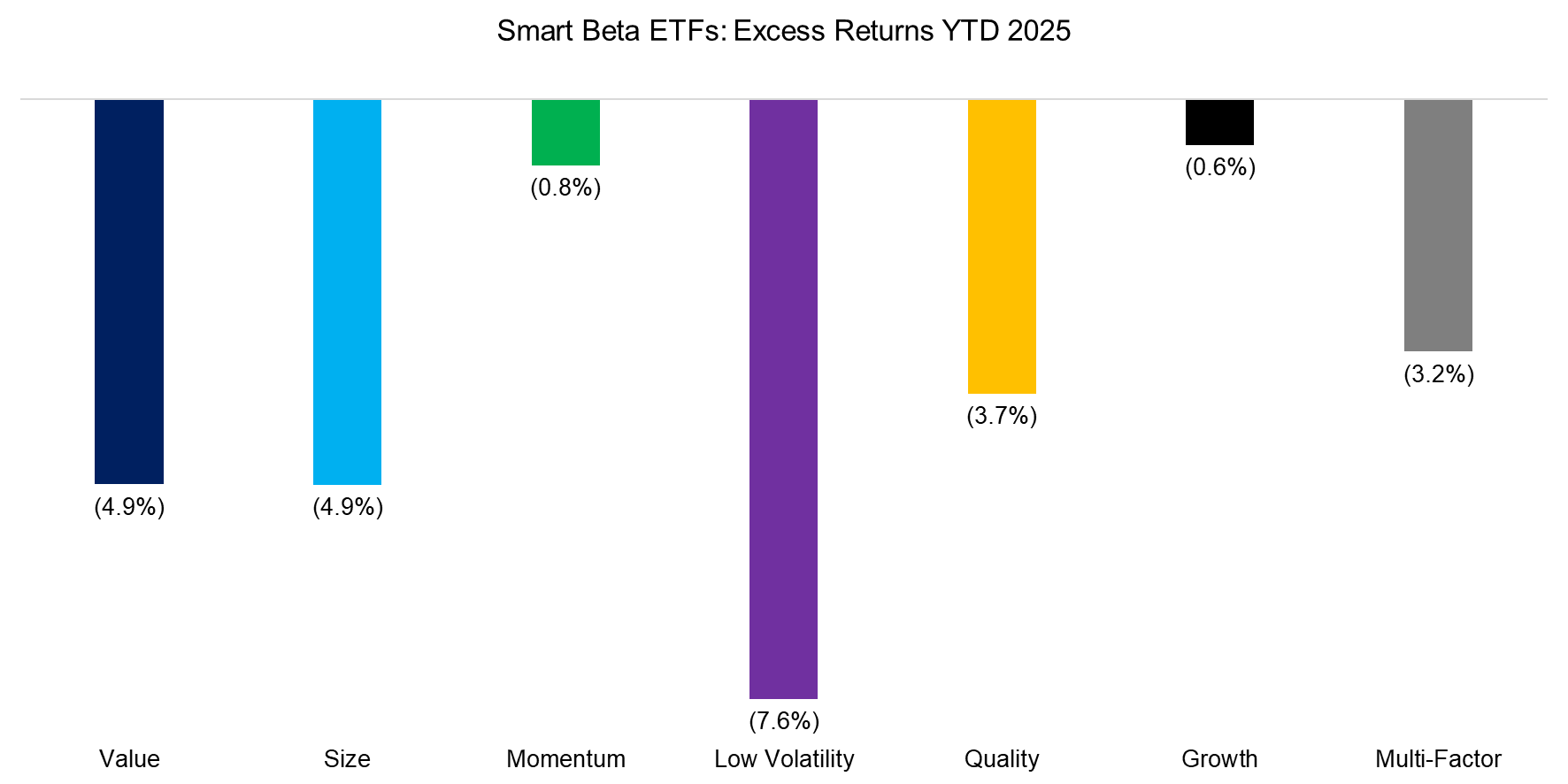Factor Olympics Q3 2025
And the winner is…
October 2025. Reading Time: 10 Minutes. Author: Nicolas Rabener.
SUMMARY
- The momentum factor increased its leadership position
- The low volatility factor moved from second-best to worst performance
- Market-neutral factor returns continue to be more attractive than long-only excess returns
INTRODUCTION
We present the performance of well-known factors year-to-date as well as over the last decade. We have started to include the growth factor, which, according to academic research, has generated negative returns over the long term, but is a widely followed investment style.
METHODOLOGY
Our factors are created by constructing long-short beta-neutral portfolios of the top and bottom 30% of stocks. Only stocks with a minimum market capitalization of $1 billion are included. Portfolios are rebalanced monthly, and transactions incur a 10-basis-point cost. Stocks are selected on the following metrics:
- Value: A combination of price-to-earnings and price-to-book multiples
- Size: Market capitalization
- Momentum: Total return over the last 12 months
- Low volatility: Volatility over the last 12 months
- Profitability: Net income-over-equity
- Leverage: Debt-over-equity
- Growth: A combination of sales-per-share and earnings-per-share over the last three years
FACTOR OLYMPICS: EXCESS RETURNS
The table below ranks long-short factor performance over the past 10 years. Beyond showing performance, it illustrates the sharp year-to-year rotations in factor profitability, underscoring the value of diversifying across multiple factors.
In the first half of 2025, only the low volatility and momentum factors delivered positive returns. By the third quarter, however, low volatility shifted from the second-strongest performer to the weakest. An equal-weighted portfolio of all factors – excluding growth – would have returned 0.1% before management fees.

Source: Finominal
TRENDS IN FACTOR PERFORMANCE
During the third quarter of 2025, most factors delivered flat performance with limited volatility. The notable exceptions were the sharp decline in the low volatility factor and the strong upward trajectory in the momentum factor. Both appear to have been influenced by the same underlying drivers – namely the “Magnificent 7” and other AI-related stocks, which posted strong but highly volatile gains.

Source: Finominal
PERFORMANCE OF LONG-SHORT MULTI-FACTOR PRODUCTS
Only a handful of liquid alternative mutual funds and ETFs offer pure long-short factor exposure, as seen in academic research. Despite numerous fund liquidations over the past decade, Simplify Asset Management introduced two new products in 2023: the Simplify Market Neutral Equity Long/Short ETF (EQLS) and the Simplify Multi-QIS Alternative ETF (QIS), both designed to provide exposure to equity and cross-asset factors.
However, in the second quarter, EQLS was liquidated, highlighting investors’ limited patience with alternative strategies that are not quickly generating positive returns. QIS will likely follow soon given it’s poor performance.
In contrast, AQR’s Equity Market Neutral Fund (QMNIX) and Style Premia Alternative Fund (QSPRX) maintained their strong returns from the half year. FLSP and VMNIX have also generated attractive returns in the third quarter.

Source: Finominal
SMART BETA EXCESS RETURNS
Although investors should allocate to factors constructed as long-short portfolios given that these offer high diversification benefits, most invest via long-only smart beta ETFs (read Smart Beta vs Alpha + Beta). Following the money, we highlight the excess returns generated from investing in smart beta ETFs in the US, which represents a universe of 160+ products and approximately $800 billion of assets under management. We also show the performance of the growth factor, which is popular with investors but is not associated with positive excess returns over time (read What Are Growth Stocks?).
We observe that there are some differences, but also some similarities between long-short and long-only factor investing. The momentum factor generated strong returns in year-to-date 2025, while momentum smart beta ETFs underperformed. However, no smart beta category produced positve returns, which aligns with the negative returns of all other factors (read Market-Neutral versus Smart Beta Factor Investing).

Source: Finominal
FACTOR CORRELATIONS
The 12-month correlation analysis reveals several strong positive relationships, including value & low volatility, profitability & low volatility, and growth & momentum. It also highlights notable negative correlations, such as value & momentum, value & low leverage, and size & profitability. Many of these relationships are structural rather than temporal – for example, cheap stocks often underperform and are frequently associated with high leverage.

Source: Finominal
FURTHER THOUGHTS
In 2021, researchers at Robeco published “When Equity Factors Drop Their Shorts,” arguing that factor investing is best pursued through long-only funds – the very products Robeco primarily distributes. Fast forward to 2025, however, and the picture has flipped: long-only multi-factor strategies have been struggling for years, while long-short multi-factor products are hitting record highs. Perhaps it’s time to put the shorts back on.
RELATED RESEARCH
Market-Neutral versus Smart Beta Factor Investing
Factor Optimization via ETFs
Smart Beta ETF vs Customized Factor Portfolios
Factor Exposure Analysis 114: Factor Offsetting
Improving Smart Beta Attribution Analysis II
Quality in Small versus Large-Cap Stocks
The Illusion of the Small-Cap Premium
Shorting Lousy Stocks = Lousy Returns?
Higher Volatility, Higher Alpha?
Outperformance Ain’t Alpha
Improving the Odds of Value Investing
The Value Factor’s Pain: Are Intangibles to Blame?
Smart Beta vs Alpha + Beta
How Painful Can Factor Investing Get?
GARP Investing: Golden or Garbage? II
Are Low-Risk Stocks Really Low-Risk?
ABOUT THE AUTHOR
Nicolas Rabener is the CEO & Founder of Finominal, which empowers professional investors with data, technology, and research insights to improve their investment outcomes. Previously he created Jackdaw Capital, an award-winning quantitative hedge fund. Before that Nicolas worked at GIC and Citigroup in London and New York. Nicolas holds a Master of Finance from HHL Leipzig Graduate School of Management, is a CAIA charter holder, and enjoys endurance sports (Ironman & 100km Ultramarathon).
Connect with me on LinkedIn or X.

